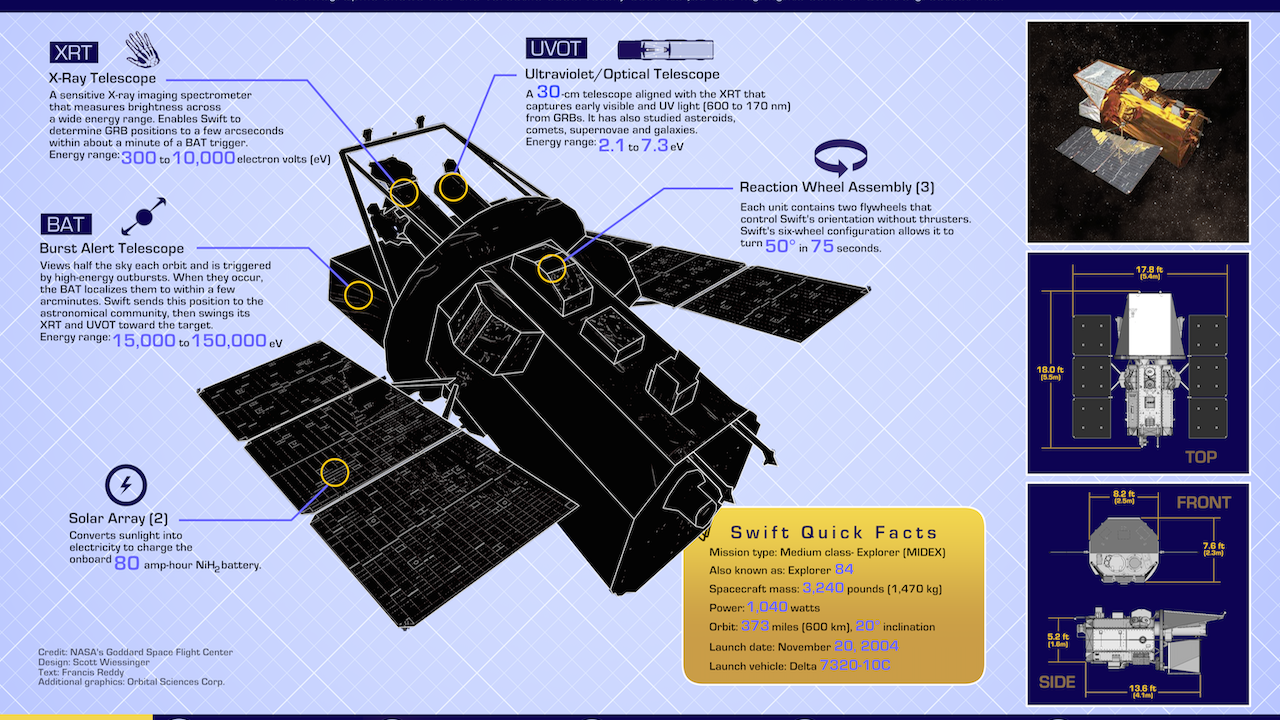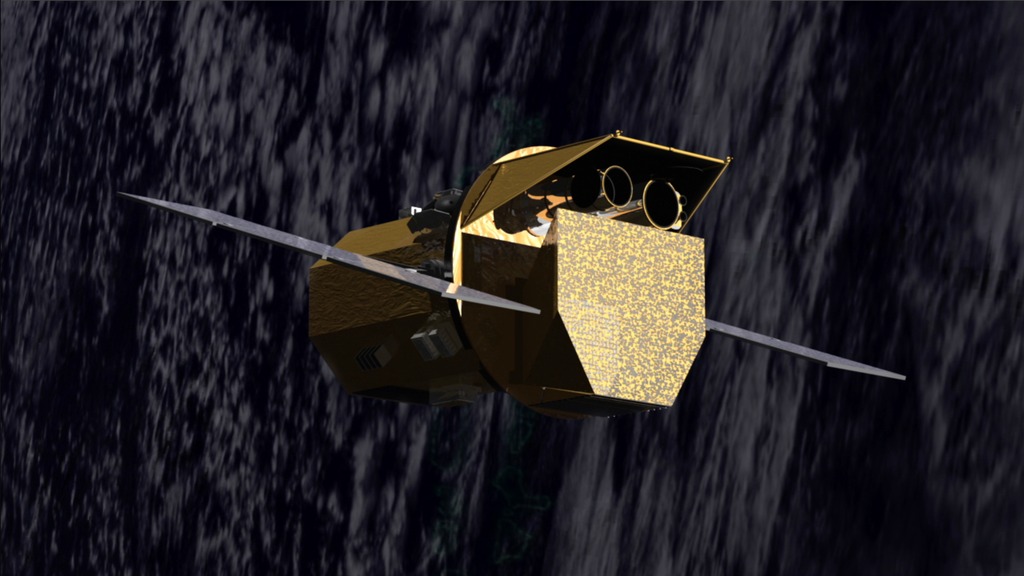What's In A Name? NASA's Swift Mission
Watch to learn how NASA’s Neil Gehrels Swift Observatory got its name.
Credit: NASA’s Goddard Space Flight Center
Music: “In a Conundrum,” Pip Heywood [PRS], Universal Production Music
“Spinning Particles,” Christian Telford [ASCAP] and Koichi Sanchez-Imahashi [ASCAP], Universal Production Music
Watch this video on the NASA Goddard YouTube channel.
Complete transcript available.
After two decades in space, NASA’s Neil Gehrels Swift Observatory is performing better than ever thanks to a new operational strategy implemented earlier this year. Since its launch on Nov. 20, 2004, the spacecraft has made great scientific strides in exploring gamma-ray bursts, the most powerful explosions in the universe.
Gamma-ray bursts occur all over the sky without warning, with about one a day detected on average. Astronomers generally divide these bursts into two categories. Long bursts produce an initial pulse of gamma rays for two seconds or more and occur when the cores of massive stars collapse to form black holes. Short bursts last less than two seconds and are caused by the mergers of dense objects like neutron stars.
Originally called the Swift Observatory for its ability to quickly point at cosmic events, like gamma-ray bursts, the mission team renamed the spacecraft in 2018 after its first principal investigator Neil Gehrels.
Swift uses several methods for orienting and stabilizing itself in space.
Sensors that detect the Sun’s location and the direction of Earth’s magnetic field provide the spacecraft with a general sense of its location. Then, a device called a star tracker looks at stars and tells the spacecraft how to maneuver to keep the observatory precisely pointed at the same position during long observations.
Swift uses three spinning gyroscopes, or gyros, to carry out those moves along three axes. The gyros were designed to align at right angles to each other, but once in orbit the mission team discovered they were slightly misaligned. The flight operations team developed a strategy where one of the gyros worked to correct the misalignment while the other two pointed Swift to achieve its science goals.
The team wanted to be ready in case one of the gyros failed, however, so in 2009 they developed a plan to operate Swift using just two. Any change to the way a telescope operates once in space carries risk, however. Since Swift was working well, the team sat on their plan for 15 years.
Then, in July 2023, one of Swift’s gyros began working improperly. Because the telescope couldn’t hold its pointing position accurately, observations got progressively blurrier until the gyro failed entirely in March 2024. The team was able to quickly shift to the new operational strategy, and the spacecraft is now performing better than ever.
For More Information
See NASA.gov
Credits
Please give credit for this item to:
NASA's Goddard Space Flight Center. However, individual items should be credited as indicated above.
-
Producer
- Scott Wiessinger (eMITS)
-
Science writers
- Jeanette Kazmierczak (University of Maryland College Park)
- Francis Reddy (University of Maryland College Park)
-
Narrator
- Scott Wiessinger (eMITS)
-
Animator
- Adriana Manrique Gutierrez (eMITS)
-
Visualizer
- Francis Reddy (University of Maryland College Park)
-
Editor
- Scott Wiessinger (eMITS)
-
Scientists
- Brad Cenko (NASA/GSFC)
- Regina Caputo (NASA/GSFC)
Release date
This page was originally published on Wednesday, November 20, 2024.
This page was last updated on Tuesday, November 19, 2024 at 2:53 PM EST.


